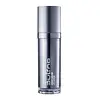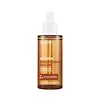What's inside
What's inside
 Key Ingredients
Key Ingredients

 Benefits
Benefits

 Concerns
Concerns

 Ingredients Side-by-side
Ingredients Side-by-side

Aureobasidium Pullulans Ferment Extract
Tuber Melanosporum Extract
HumectantButylene Glycol
HumectantHydrogenated Polyisobutene
Emollient1,2-Hexanediol
Skin ConditioningPanthenol
Skin ConditioningDimethicone
EmollientCetearyl Olivate
Sorbitan Olivate
EmulsifyingWater
Skin ConditioningSodium Acrylate/Sodium Acryloyldimethyl Taurate Copolymer
Emulsion StabilisingArginine
MaskingGlutathione
Isohexadecane
EmollientCeteareth-20
CleansingSodium Hyaluronate
HumectantPolysorbate 80
EmulsifyingSimmondsia Chinensis Seed Oil
EmollientHelianthus Annuus Seed Oil
EmollientTocopheryl Acetate
AntioxidantAllantoin
Skin ConditioningArgania Spinosa Kernel Oil
EmollientOlea Europaea Fruit Oil
MaskingParfum
MaskingAdenosine
Skin ConditioningEthylhexylglycerin
Skin ConditioningDisodium EDTA
Olea Europaea Husk Oil
Skin ConditioningTocopherol
AntioxidantAnemarrhena Asphodeloides Root Extract
Skin ConditioningCaprylyl Glycol
EmollientAcetyl Octapeptide-3
HumectantAcetyl Hexapeptide-8
HumectantAcetyl Hexapeptide-22
AntioxidantOligopeptide-28
AntioxidantSh-Pentapeptide-19
Skin ConditioningSh-Octapeptide-4
AntioxidantCaffeoyl Tripeptide-1
AntioxidantSh-Decapeptide-7
AntioxidantSh-Oligopeptide-1
Skin ConditioningAureobasidium Pullulans Ferment Extract, Tuber Melanosporum Extract, Butylene Glycol, Hydrogenated Polyisobutene, 1,2-Hexanediol, Panthenol, Dimethicone, Cetearyl Olivate, Sorbitan Olivate, Water, Sodium Acrylate/Sodium Acryloyldimethyl Taurate Copolymer, Arginine, Glutathione, Isohexadecane, Ceteareth-20, Sodium Hyaluronate, Polysorbate 80, Simmondsia Chinensis Seed Oil, Helianthus Annuus Seed Oil, Tocopheryl Acetate, Allantoin, Argania Spinosa Kernel Oil, Olea Europaea Fruit Oil, Parfum, Adenosine, Ethylhexylglycerin, Disodium EDTA, Olea Europaea Husk Oil, Tocopherol, Anemarrhena Asphodeloides Root Extract, Caprylyl Glycol, Acetyl Octapeptide-3, Acetyl Hexapeptide-8, Acetyl Hexapeptide-22, Oligopeptide-28, Sh-Pentapeptide-19, Sh-Octapeptide-4, Caffeoyl Tripeptide-1, Sh-Decapeptide-7, Sh-Oligopeptide-1
Water
Skin ConditioningPropanediol
SolventButylene Glycol
HumectantNiacinamide
SmoothingGlycerin
Humectant1,2-Hexanediol
Skin ConditioningPolyglyceryl-10 Laurate
Skin ConditioningHydroxyacetophenone
AntioxidantGlyceryl Glucoside
HumectantCarbomer
Emulsion StabilisingSodium Polyacryloyldimethyl Taurate
Emulsion StabilisingArginine
MaskingHydroxyethylcellulose
Emulsion StabilisingDisodium EDTA
Panthenol
Skin ConditioningEthylhexylglycerin
Skin ConditioningGlyceryl Acrylate/Acrylic Acid Copolymer
HumectantThiamine Hcl
MaskingPyridoxine
Skin ConditioningVitis Vinifera Fruit Extract
Skin ConditioningCitrus Aurantium Dulcis Fruit Extract
MaskingMalus Domestica Fruit Extract
AntioxidantCitrus Limon Fruit Extract
MaskingDisodium Phosphate
BufferingPolysorbate 60
EmulsifyingTocopherol
AntioxidantSodium Ascorbyl Phosphate
AntioxidantSodium Phosphate
BufferingFolic Acid
Skin ConditioningTocopheryl Acetate
AntioxidantRiboflavin
Cosmetic ColorantAscorbic Acid
AntioxidantBiotin
AntiseborrhoeicRetinol
Skin ConditioningPyridoxine Hcl
Skin ConditioningCyanocobalamin
Skin ConditioningMenadione
MaskingBioflavonoids
Skin ConditioningGlutathione
Parfum
MaskingWater, Propanediol, Butylene Glycol, Niacinamide, Glycerin, 1,2-Hexanediol, Polyglyceryl-10 Laurate, Hydroxyacetophenone, Glyceryl Glucoside, Carbomer, Sodium Polyacryloyldimethyl Taurate, Arginine, Hydroxyethylcellulose, Disodium EDTA, Panthenol, Ethylhexylglycerin, Glyceryl Acrylate/Acrylic Acid Copolymer, Thiamine Hcl, Pyridoxine, Vitis Vinifera Fruit Extract, Citrus Aurantium Dulcis Fruit Extract, Malus Domestica Fruit Extract, Citrus Limon Fruit Extract, Disodium Phosphate, Polysorbate 60, Tocopherol, Sodium Ascorbyl Phosphate, Sodium Phosphate, Folic Acid, Tocopheryl Acetate, Riboflavin, Ascorbic Acid, Biotin, Retinol, Pyridoxine Hcl, Cyanocobalamin, Menadione, Bioflavonoids, Glutathione, Parfum
Ingredients Explained
These ingredients are found in both products.
Ingredients higher up in an ingredient list are typically present in a larger amount.
1,2-Hexanediol is a synthetic liquid and another multi-functional powerhouse.
It is a:
- Humectant, drawing moisture into the skin
- Emollient, helping to soften skin
- Solvent, dispersing and stabilizing formulas
- Preservative booster, enhancing the antimicrobial activity of other preservatives
Arginine is an amino acid that is important for human development. Your body uses is it to produce hair keratin and skin collagen.
As a cosmetic ingredient, Arginine has antioxidant properties and can also help repair damaged skin. This ingredient is derived either synthetically or from animals.
Arginine isn't fungal acne safe when used in the presence of other lipids (fats, fatty acids, oils, esters, etc). Oils and fats occur naturally within the skin, so take caution when using Arginine if you're prone to fungal acne.
Learn more about ArginineButylene Glycol (or BG) is used within cosmetic products for a few different reasons:
Overall, Butylene Glycol is a safe and well-rounded ingredient that works well with other ingredients.
Though this ingredient works well with most skin types, some people with sensitive skin may experience a reaction such as allergic rashes, closed comedones, or itchiness.
Learn more about Butylene GlycolDisodium EDTA plays a role in making products more stable by aiding other preservatives.
It is a chelating agent, meaning it neutralizes metal ions that may be found in a product.
Disodium EDTA is a salt of edetic acid and is found to be safe in cosmetic ingredients.
Learn more about Disodium EDTAEthylhexylglycerin (we can't pronounce this either) is commonly used as a preservative and skin softener. It is derived from glyceryl.
You might see Ethylhexylglycerin often paired with other preservatives such as phenoxyethanol. Ethylhexylglycerin has been found to increase the effectiveness of these other preservatives.
Glutathione is an antioxidant naturally found in our bodies. It is made up of three amino acids: glycine, cysteine, and glutamic acid.
As an antioxidant, it prevents oxidative damage to parts of our cell.
While glutathione is said to help with fading dark spots, the results from research are inconclusive. Further studies are needed. With that said, gluthatione has been shown to protect our skin from UV-B induced damage.
This ingredient is naturally occurring in plants, animals, fungi, and some bacteria.
Learn more about GlutathionePanthenol is a common ingredient that helps hydrate and soothe the skin. It is found naturally in our skin and hair.
There are two forms of panthenol: D and L.
D-panthenol is also known as dexpanthenol. Most cosmetics use dexpanthenol or a mixture of D and L-panthenol.
Panthenol is famous due to its ability to go deeper into the skin's layers. Using this ingredient has numerous pros (and no cons):
Like hyaluronic acid, panthenol is a humectant. Humectants are able to bind and hold large amounts of water to keep skin hydrated.
This ingredient works well for wound healing. It works by increasing tissue in the wound and helps close open wounds.
Once oxidized, panthenol converts to pantothenic acid. Panthothenic acid is found in all living cells.
This ingredient is also referred to as pro-vitamin B5.
Learn more about PanthenolParfum is a catch-all term for an ingredient or more that is used to give a scent to products.
Also called "fragrance", this ingredient can be a blend of hundreds of chemicals or plant oils. This means every product with "fragrance" or "parfum" in the ingredients list is a different mixture.
For instance, Habanolide is a proprietary trade name for a specific aroma chemical. When used as a fragrance ingredient in cosmetics, most aroma chemicals fall under the broad labeling category of “FRAGRANCE” or “PARFUM” according to EU and US regulations.
The term 'parfum' or 'fragrance' is not regulated in many countries. In many cases, it is up to the brand to define this term.
For instance, many brands choose to label themselves as "fragrance-free" because they are not using synthetic fragrances. However, their products may still contain ingredients such as essential oils that are considered a fragrance by INCI standards.
One example is Calendula flower extract. Calendula is an essential oil that still imparts a scent or 'fragrance'.
Depending on the blend, the ingredients in the mixture can cause allergies and sensitivities on the skin. Some ingredients that are known EU allergens include linalool and citronellol.
Parfum can also be used to mask or cover an unpleasant scent.
The bottom line is: not all fragrances/parfum/ingredients are created equally. If you are worried about fragrances, we recommend taking a closer look at an ingredient. And of course, we always recommend speaking with a professional.
Learn more about ParfumTocopherol (also known as Vitamin E) is a common antioxidant used to help protect the skin from free-radicals and strengthen the skin barrier. It's also fat soluble - this means our skin is great at absorbing it.
Vitamin E also helps keep your natural skin lipids healthy. Your lipid skin barrier naturally consists of lipids, ceramides, and fatty acids. Vitamin E offers extra protection for your skin’s lipid barrier, keeping your skin healthy and nourished.
Another benefit is a bit of UV protection. Vitamin E helps reduce the damage caused by UVB rays. (It should not replace your sunscreen). Combining it with Vitamin C can decrease sunburned cells and hyperpigmentation after UV exposure.
You might have noticed Vitamin E + C often paired together. This is because it is great at stabilizing Vitamin C. Using the two together helps increase the effectiveness of both ingredients.
There are often claims that Vitamin E can reduce/prevent scarring, but these claims haven't been confirmed by scientific research.
Learn more about TocopherolTocopheryl Acetate is AKA Vitamin E. It is an antioxidant and protects your skin from free radicals. Free radicals damage the skin by breaking down collagen.
One study found using Tocopheryl Acetate with Vitamin C decreased the number of sunburned cells.
Tocopheryl Acetate is commonly found in both skincare and dietary supplements.
Learn more about Tocopheryl AcetateWater. It's the most common cosmetic ingredient of all. You'll usually see it at the top of ingredient lists, meaning that it makes up the largest part of the product.
So why is it so popular? Water most often acts as a solvent - this means that it helps dissolve other ingredients into the formulation.
You'll also recognize water as that liquid we all need to stay alive. If you see this, drink a glass of water. Stay hydrated!
Learn more about Water